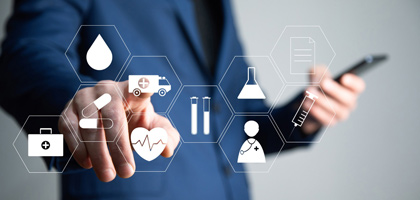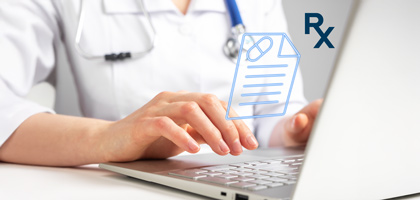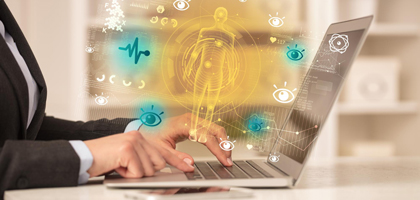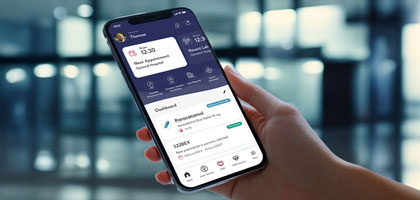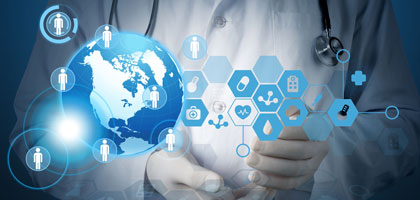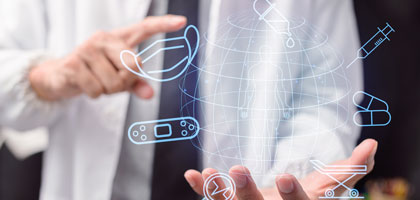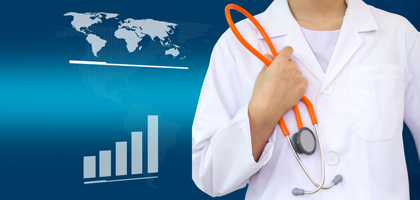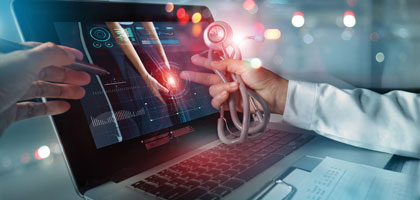
Blog
Real-World Examples of Successful Healthcare IT Systems
The integration of information technologies (IT) into healthcare represents a significant transformation in the way healthcare is delivered and managed. This transformative journey goes beyond the digitization of records; it represents a shift towards a more interconnected, efficient and patient-centered healthcare IT system. In this era of rapid technological advancements, healthcare IT has become a fundamental tool that indicates a new era of enhanced healthcare delivery, improved patient outcomes and streamlined administrative processes.
![]()
At the heart of this integration is healthcare interoperability, which means that different IT systems and software applications can communicate and exchange health data effectively. This seamless health data exchange is essential for creating a healthcare ecosystem where patient information is accessible, secure and usable across various platforms and stakeholders. Interoperability enables healthcare authorities to comprehensively understand a patient's medical history, leading to more accurate diagnoses, personalized treatment plans and better patient care.
Moreover, IT in healthcare is not just about improving patient care but also about revolutionizing the entire healthcare ecosystem. From hospital information systems to pharmaceutical track and trace systems, from big data analytics to artificial intelligence (AI) applications, each technological advancement is shaping a more efficient, cost-effective and accessible healthcare system. These technologies enable health authorities to make informed decisions, reduce medical errors and provide timely and tailored care based on patients' needs.
Our blog will discuss three real-life applications from us: Pharmaceutical Track and Trace System, branded as DrugXafe, Personal Health Record (PHR) and Central e-Prescription. Each represents a feature of the transformative impact of IT in healthcare and highlights the depth of technology's role in modern healthcare. DrugXafe demonstrates the critical importance of drug safety and supply chain integrity, PHR demonstrates patient engagement through data accessibility and Central e-Prescription demonstrates the efficiency of integrated medication management systems.
As we begin this blog, it is crucial to recognize that the role of IT in healthcare is multifaceted and constantly evolving. It is all about creating a healthcare system that is more efficient and cost-effective, responsive and relevant to patients' needs. The integration of IT in healthcare is driven by the extraordinary potential of technology to improve the quality and delivery of care, shaping a future where healthcare is more accessible, personalized and effective.
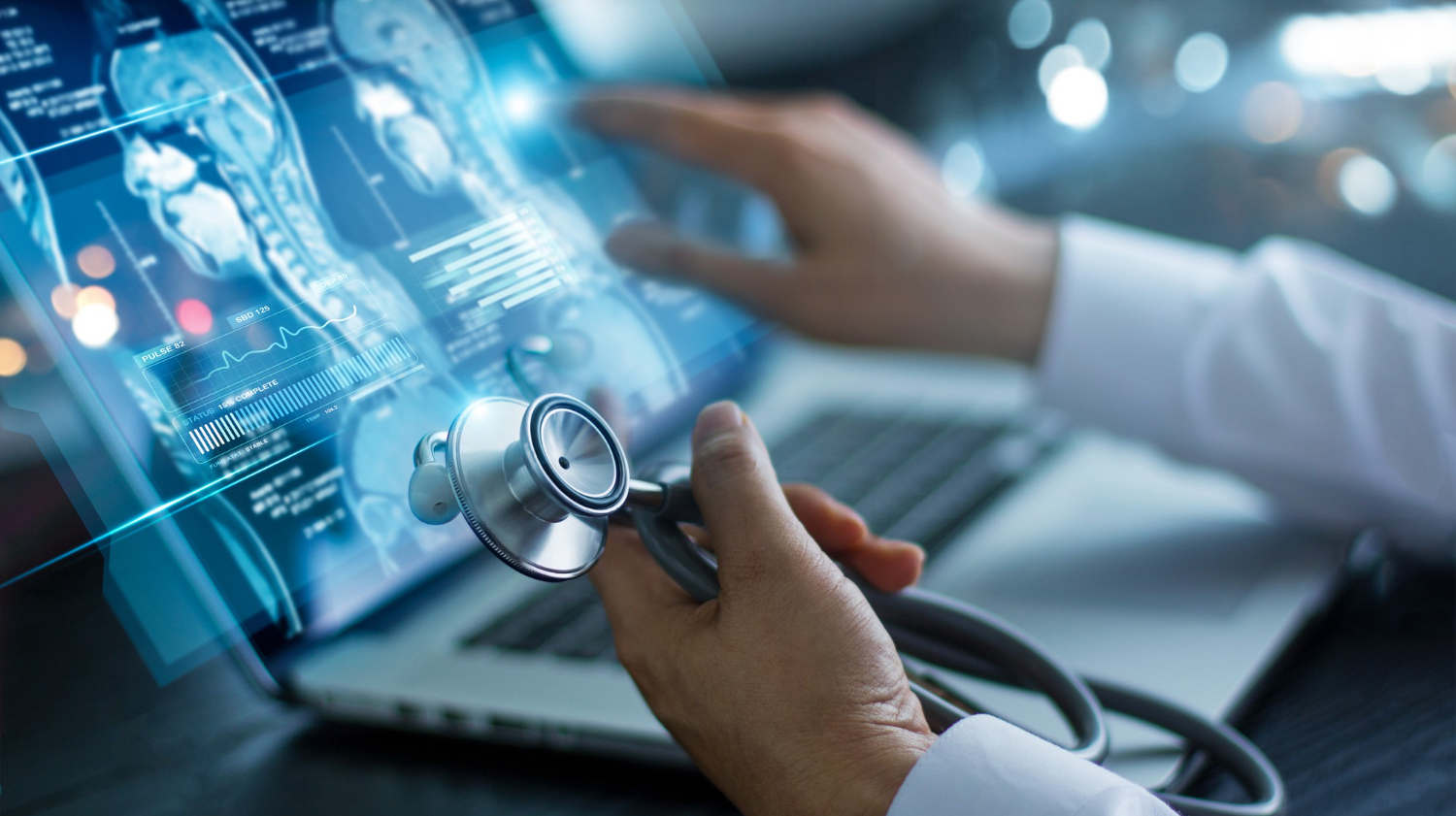
The Importance of IT in Healthcare
Integrating IT into healthcare is a transformative force fundamentally reshaping the healthcare and management landscape. Going beyond digitization, this integration represents a strategic alignment of technology with healthcare objectives to enhance patient care, streamline processes and optimize data management. In a world where technology and healthcare are increasingly entangled, it is crucial to understand the critical role of IT.
One of the primary benefits of IT in healthcare is improving patient care. Personal Health Record (PHR), for example, provides a comprehensive, real-time view of a patient's health history, allowing for more accurate diagnoses, personalized treatment plans and improved patient outcomes.
Efficiency and cost-effectiveness are other critical advantages. Effective IT applications streamlines administrative tasks, automates routine processes and reduces the possibility of errors, resulting in significant time and cost savings. This efficiency benefits healthcare authorities and patients, as it often means shorter waiting times, faster diagnoses and more effective treatments.
Furthermore, IT in healthcare plays a vital role in data management and security. With large amounts of sensitive health data being generated every day, robust IT systems ensure that this data is stored, processed and transmitted securely, protecting patient privacy and complying with regulatory standards.
Another vital aspect is the facilitation of medical research and public health management. Big data analytics, powered by IT, enables large datasets to be analyzed to identify trends, predict outbreaks and develop new treatment protocols. This data-driven approach is integral to advancing medical knowledge and developing public health strategies.
As a result, IT in healthcare is not just a subsidiary but an essential component enabling better patient outcomes, efficiency, data security and medical research.
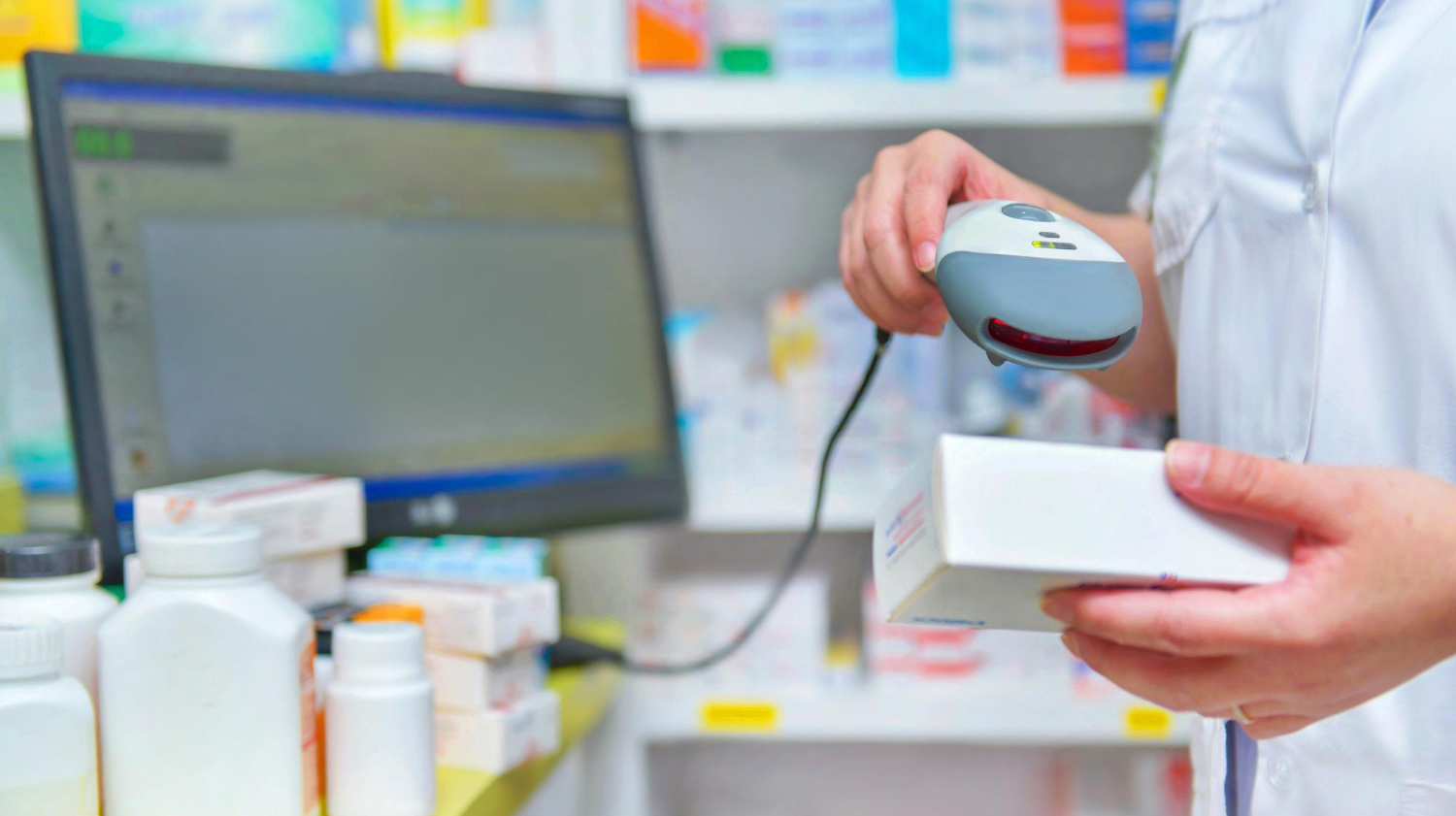
Pharmaceutical Track and Trace System - DrugXafe: Pharmaceutical Safety and Supply Chain Integrity
DrugXafe represents a significant advancement in drug safety and supply chain management. As a Pharmaceutical Track and Trace System, it plays a vital role in ensuring the integrity and security of the pharmaceutical supply chain from manufacturing to the end user. This innovative system addresses many critical challenges in the pharmaceutical industry, including counterfeiting, reimbursement fraud and inefficient inventory management.
At the core of DrugXafe's functionality is the ability to ensure drug safety by combating counterfeit medicines. Counterfeit medicines pose a significant risk to patient safety, often leading to serious health consequences and even deaths. DrugXafe tackles this issue properly, using advanced 2D Data Matrix technology to track medicines throughout the supply chain. This ensures that only authentic and safe medication reaches patients, empowering trust in the pharmaceutical market and healthcare institutions.
Another critical aspect of DrugXafe is its role in preventing reimbursement fraud and parallel trade. The system tracks all manufactured and imported medicines, ensuring that every transaction is legitimate and transparent. The serialization of each medicine box with a unique QR code allows for precise tracking, reducing the likelihood of fraudulent activities.
DrugXafe also excels in effectively managing the supply chain. It provides tools for effective recall, expiry control and inventory management. The system ensures patient safety by quickly identifying and withdrawing recalled medicines from the market. Moreover, DrugXafe’s expiration date control feature guards public health by preventing the sale of certain medications with a single update. For instance, when a drug containing an anti-malarial component was rumored to be effective against Covid-19, there was a surge in its demand only, effectively stopping its unregulated sale. This incident exemplifies how authority can be strengthened and exercised effectively in such situations.
Additionally, as highlighted in the OECD and the European Union Intellectual Property Office (EUIPO) report, counterfeit drugs pose a severe threat to public health, economies and the enviroment worldwide. The report reveals alarming statistics, such as an estimated 72,000 to 169,000 children dying annually from pneumonia due to counterfeit medicines. Similarly, fake anti-malarial drugs are believed to cause around 116,000 children each year. These dire consequences underscore the urgent need for decisive actions to protect health and save lives.
DrugXafe's user-friendly interface is another critical feature designed to empower all stakeholders in the healthcare ecosystem. This includes healthcare professionals, regulatory bodies and patients. The system's high performance, scalability and compliance with international standards make it an accessible and reliable solution for various healthcare needs.
Also, DrugXafe Mobile App is an innovative solution designed to empower citizens by enabling them to verify their health information anytime and anywhere using a 2D Data Matrix. This user-friendly application enhances patient safety by ensuring the authenticity and validity of medications and provides current drug price information. This feature is particularly beneficial for patients, as it promotes transparency in drug pricing and helps them make informed decisions about their healthcare expenditures. The DrugXafe Mobile App plays a pivotal role in safeguarding public health and contributing to better healthcare management by providing instant access to critical information about drugs.
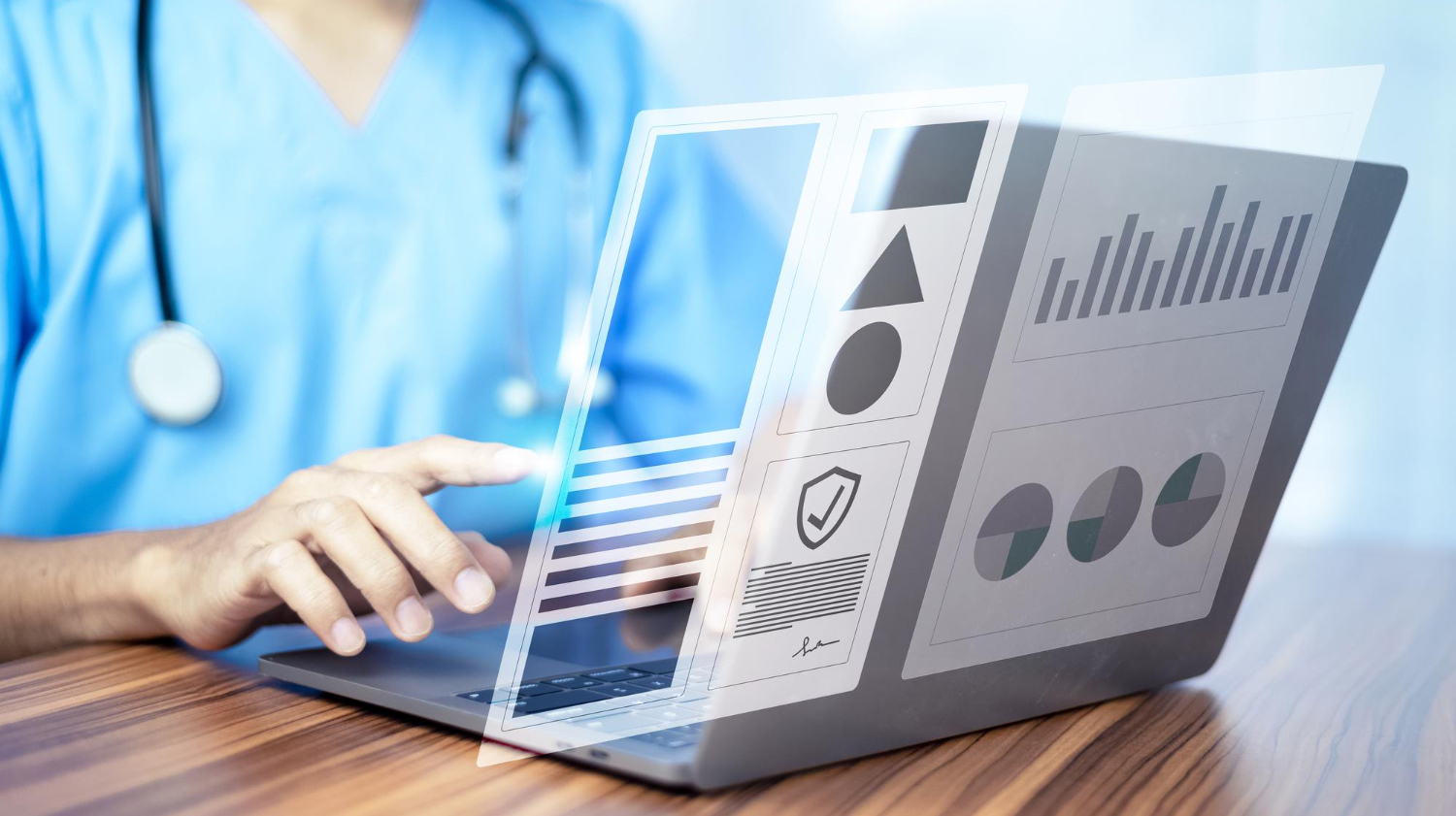
Patients in Healthcare Management: Personal Health Record (PHR) System
Personal Health Record System is a transformative digital platform that redefines patient engagement and digital health record management. It offers detailed insights beyond traditional patient interviews, crucial for shared decision-making between patients and physicians.[1] This innovative system puts patients at the center of their healthcare journey by giving them 24/7 access to their health records. The PHR represents a significant leap forward in patient empowerment, data accessibility and integrated healthcare, marking a new era in personalized and patient-centered healthcare.
The PHR's primary strength lies in its ability to give patients comprehensive control and management over their health records. This includes access to examinations, laboratory results, radiological images and prescriptions. Such accessibility increases patient engagement and enables a higher degree of patient safety and personalized care. Patients are no longer passive recipients of healthcare but instead active participants who make informed decisions about their own health and treatment.
The integration of the system across both private and public healthcare organizations is a critical feature that facilitates seamless and real-time data sharing. This integration ensures no information gap between healthcare authorities, professionals and patients. As a result, healthcare delivery becomes more efficient, waiting times are reduced and unnecessary tests or procedures are avoided.
Another essential feature of PHR is its compatibility with smart health devices. Integration with wearable technologies such as smartwatches and blood pressure monitors enables real-time monitoring and management of health conditions. This helps prevent diseases and allows early intervention, crucial for effective treatment.
The PHR also addresses critical issues such as data privacy and security. In an era where data breaches are a significant concern, PHR's high data privacy standards protect sensitive patient information, fostering trust and confidence among users.
Moreover, PHR's innovative features such as the emergency button, medication reminders and nearest hospital feature provide additional layers of security and convenience. These functions are especially vital in emergencies and provide quick access to essential healthcare services.

Transforming Prescription Management and Patient Safety: Central e-Prescription
Central e-Prescription System is optimizing how prescriptions are managed and dispensed in the healthcare system. It enhances care quality and patient safety by reducing costs, prescription and medication errors and adverse drug effects, while also improving medication adherence and overall patient health.[2][3] This system exemplifies the integration of technology and healthcare by improving the prescribing process's efficiency, accuracy and security. It benefits patients, healthcare professionals, authorities and the healthcare system as proof of how digital advancements can streamline healthcare procedures.
At its core, Central e-Prescription is designed to address critical challenges in drug management. It prevents the issuance of fraudulent prescriptions and restricts irrational consumption of drugs, which are significant problems in healthcare. By ensuring that prescriptions are accurate and appropriate to patients' needs, the system is essential in promoting rational use of medicines and patient safety.
Integrating the system with healthcare providers and pharmacies nationwide is essential to its functionality. It provides a seamless connection, ensuring that drugs are dispensed accurately and on time according to prescriptions. This improves the quality of care and patient safety as the prescription is verified in real-time as soon as it is created.
Central e-Prescription also strengthens the implementation of health policies by providing health authorities with valuable analysis, reports and statistics on drug use and prescription rates. This data is crucial for informed decision-making and effective policy formulation in the healthcare IT sector.
Another critical advantage of Central e-Prescription is its role in providing better treatment guidelines for healthcare professionals. By providing accurate, up-to-date drug information and clinical decision support alerts, the system helps physicians create more effective treatment plans. It also helps to change prescribing behaviors by ensuring compliance with defined drug policies, thereby raising the overall standard of healthcare.
Besides, the Central e-Prescription System, with its integrated drug database interaction, optimizes how prescriptions are managed in healthcare. This system, deeply embedded in the intersection of technology and healthcare, significantly enhances the interaction between healthcare providers and the medication database, leading to more efficient and accurate prescription processes.
The core functionality of Central e-Prescription lies in its advanced interaction with a comprehensive drug database. This interaction allows healthcare providers to access up-to-date drug information, including drug interactions, side effects and contraindications. Such access is crucial for ensuring the safety and appropriateness of prescribed medications. With real-time data, healthcare professionals can make informed decisions, reducing the risk of adverse drug reactions and improving treatment outcomes.
Moreover, the system's interactive drug database addresses prescription errors, one of the most common issues in healthcare. By automatically cross-referencing patient information with the database, the system can identify potential drug-to-drug interactions or allergies, thereby preventing harmful combinations of medications. This scrutiny and automatic verification level is paramount in enhancing patient safety and ensuring that each prescription is tailored to the patient's unique story.
In terms of benefits to patients, Central e-Prescription offers better access to health data and higher quality of care. Patients benefit from information on the correct dosage and timing of medication, contributing to better treatment outcomes. The system's paperless processes further protect patient interests by reducing the risk of errors and fraud.
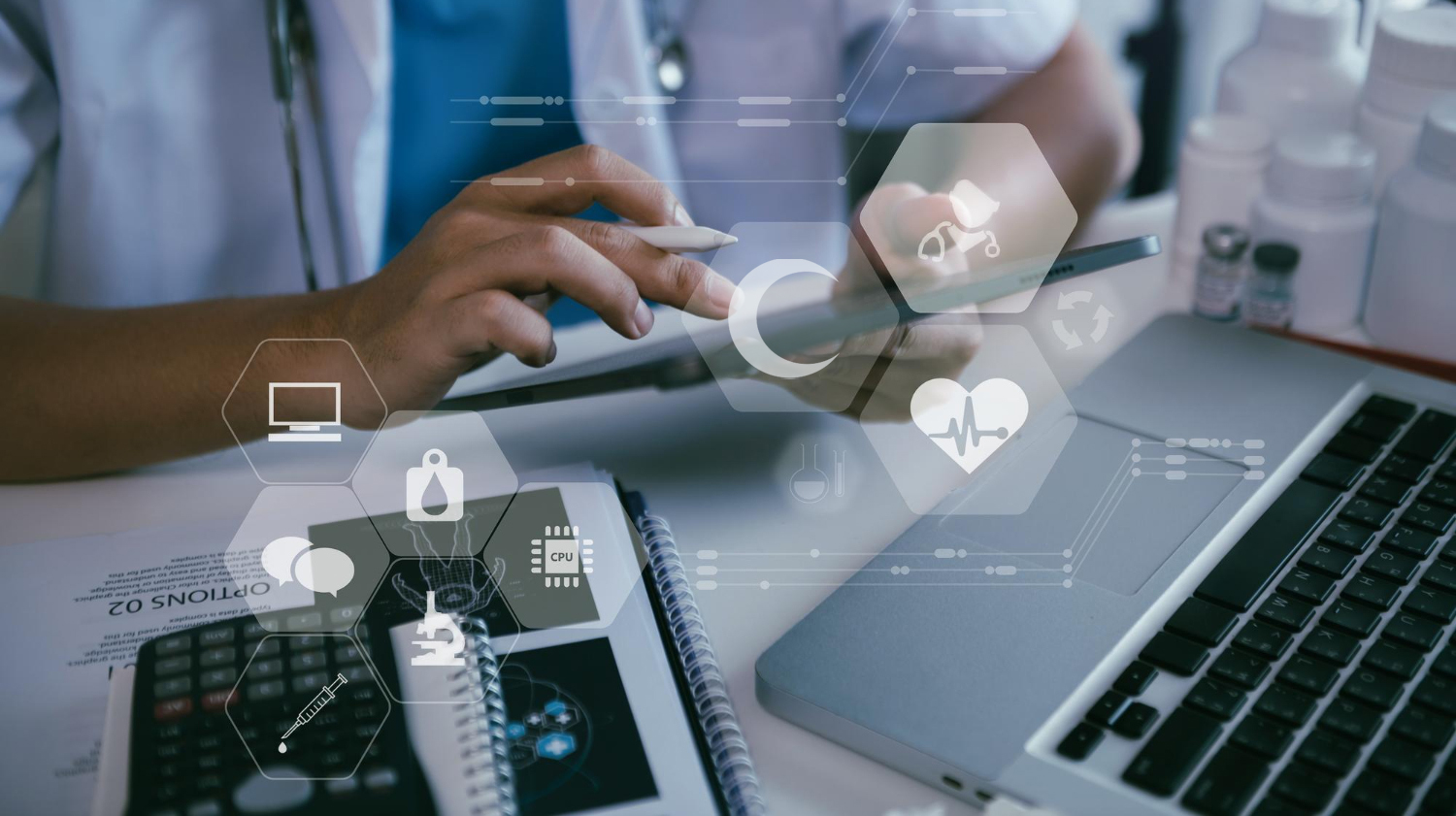
Our solutions, such as Pharmaceutical Track and Trace System, branded as DrugXafe, Personal Health Record System and Central e-Prescription have provided a compelling insight into the transformative power of IT in healthcare. These case studies are real life examples of how IT integration has improved healthcare processes and fundamentally reshaped healthcare, patient engagement and health data management.
DrugXafe has emerged as a crucial tool in ensuring drug safety and integrity, addressing the global problem of counterfeit drugs and supply chain vulnerabilities. It is a solution to how technology can protect public health while streamlining drug management.
Similarly, the Personal Health Record System represents a significant project in terms of patient engagement and accessibility to healthcare IT. By putting comprehensive health data at patients' access, the PHR has redefined the dynamics of patient-healthcare professional interactions, encouraging a more engaged, informed and proactive approach to health management.
Central e-Prescription, on the other hand, highlights the efficiencies that can be achieved in prescription management. Emphasizing the importance of accuracy, safety and policy compliance in drug dispensing demonstrates the potential of IT to streamline healthcare delivery while improving patient safety.
Collectively, these systems demonstrate the potential of technology to address current challenges and anticipate and adapt to future needs. As these solutions demonstrate, the integration of IT in healthcare goes beyond operational efficiency. It is about creating a more responsive, efficient and patient-centered healthcare ecosystem.
As we look to the future, such technologies' continued development and adoption is crucial. The journey to integrate IT into healthcare continues with the promise of delivering more innovative solutions and enhanced healthcare experiences. The need for further research, development and adoption of integrated technologies such as those we offer is clear. And as Tiga Healthcare Technologies, we are ready for this challenge and are aware of our responsibilities. Let's shape the future together!
[1] Davis S, Roudsari A, Raworth R, Courtney KL, MacKay L. Shared decision-making using personal health record technology: a scoping review at the crossroads. J Am Med Inform Assoc. 2017 Jul 01;24(4):857-866.
[2] Menachemi N., Brooks R.G. Reviewing the benefits and costs of electronic health records and associated patient safety technologies. J Med Syst. 2006;30(3):159–168.
[3] Bates D.W. Using information technology to reduce rates of medication errors in hospitals. BMJ. 2000;320(7237):788–791.
